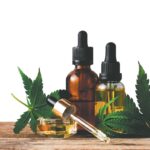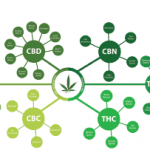Challenges & Safety
The primary challenges for rheumatologists and rheumatology health professionals advising on cannabis are related to safety, interactions with other medications and the lack of long-term data on its use in RMDs. Cannabis is known to have side effects—ranging from cognitive changes to potential dependency—that need to be considered, particularly for patients with chronic, long-term use.17 Further, many rheumatology patients use disease-modifying anti-rheumatic drugs (DMARDs) and immunosuppressants, raising concerns about possible drug interactions with cannabinoids.18 Although some preliminary studies suggest cannabis may be well-tolerated alongside other medications, further investigation is essential to confirm this in the context of specific rheumatic conditions.
Until rigorous, large-scale studies can establish definitive protocols, rheumatology should consider adopting a cautious, harm-reduction approach. This may include starting with low doses, avoiding inhaled products and closely monitoring patients for any adverse effects.
Foster Communication
Patients’ increasing interest in cannabis highlights the need for rheumatologists and rheumatology health professionals to create an open, non-judgmental space to discuss it. Although some may feel hesitant due to knowledge gaps, encouraging patient-provider dialogue can foster trust and ensure patients have access to accurate information on cannabis’ potential benefits and risks. Given that the survey indicated discomfort among certain rheumatology providers in discussing cannabis, this is a critical area in which professional education can improve the quality of care.
When discussing cannabis, we should be prepared to explain the differences between THC and CBD and emerging cannabinoids and the range of available products, from oils to topical creams, which may be relevant to individual patient needs. This information can empower patients to make more informed decisions that align with their lifestyle, pain management goals and safety considerations.
1. Start Low; Go Slow: The principle of starting with a low dose and gradually increasing is widely recommended. This approach helps minimize adverse effects while allowing the patient to find their optimal dose.19
2. CBD vs. THC:20
• CBD: Often starts with doses around 5–10 mg per day, which can be increased based on tolerance and effectiveness. CBD is non-psychoactive and may be taken more liberally, with doses ranging up to 50–100 mg per day if tolerated and beneficial.
• THC: A conservative starting dose is typically 1–2.5 mg, especially for patients inexperienced with cannabis, and this can be slowly titrated up to around 5–10 mg per day if needed. THC’s psychoactive effects require careful dosing to avoid cognitive side effects, especially in older adults.



